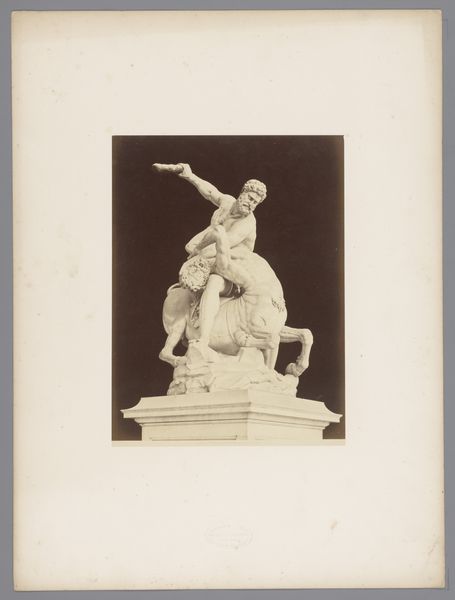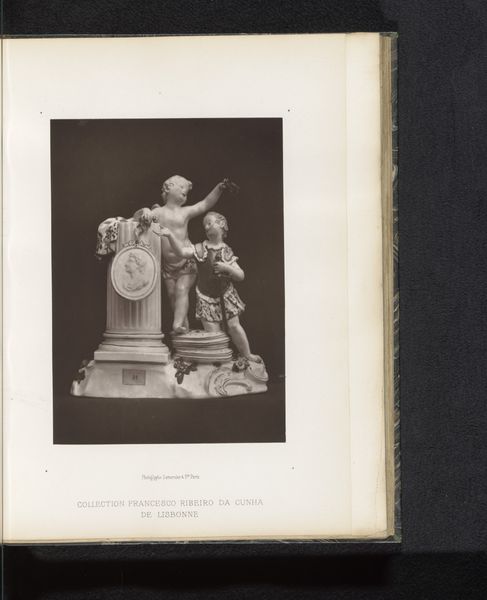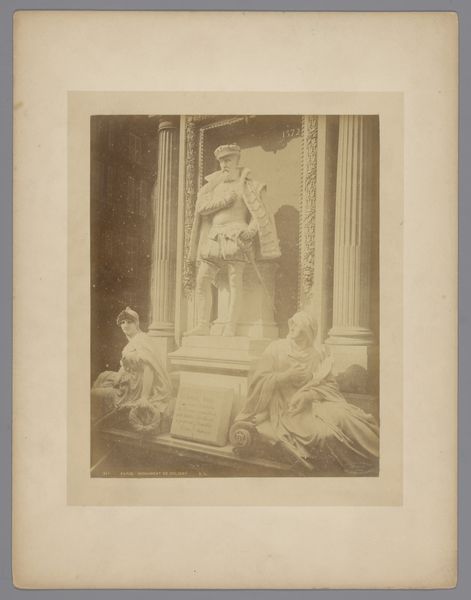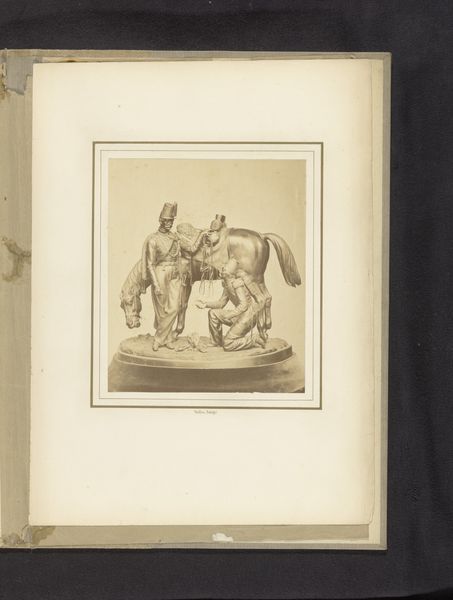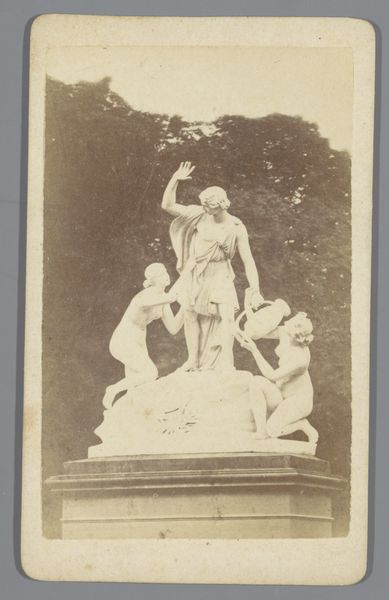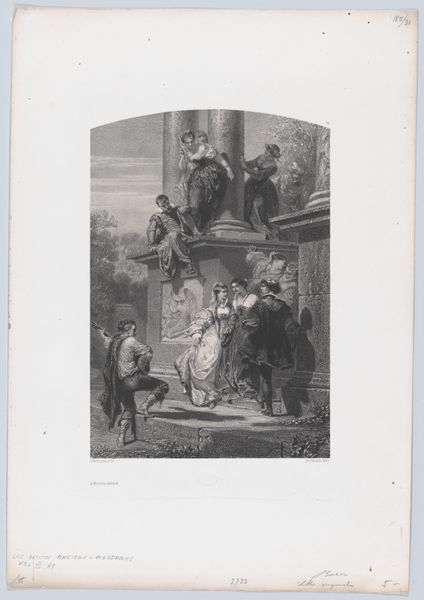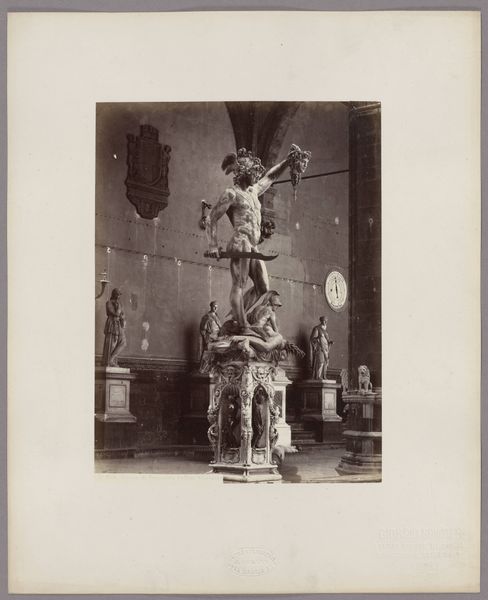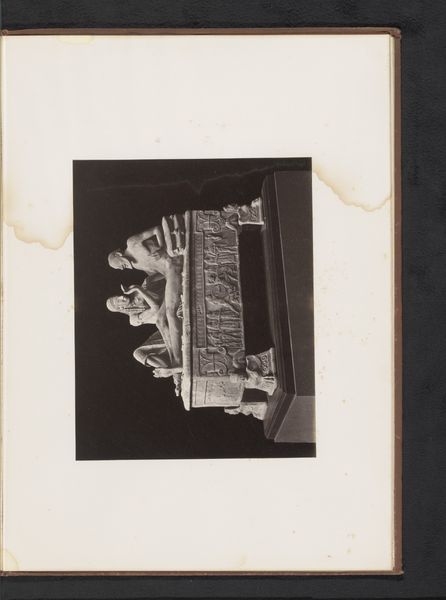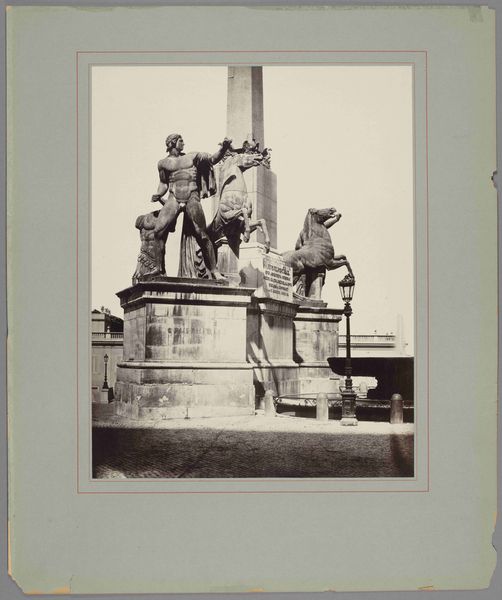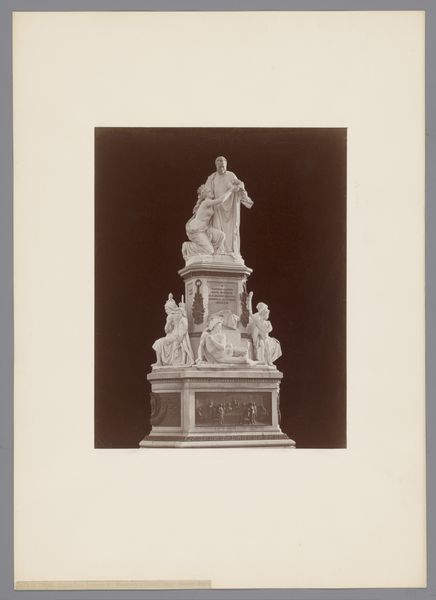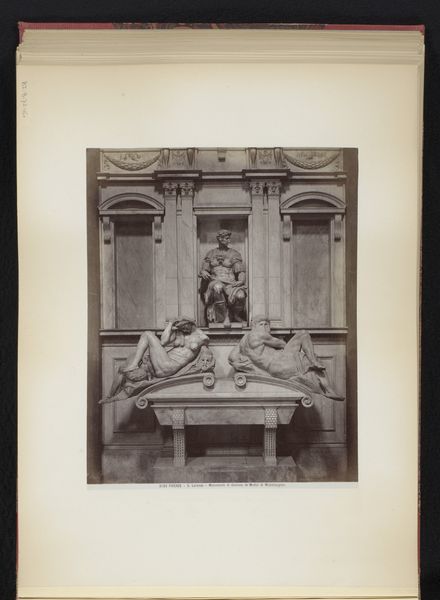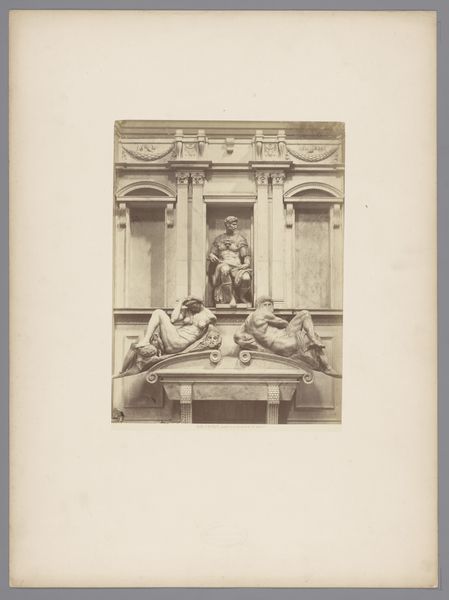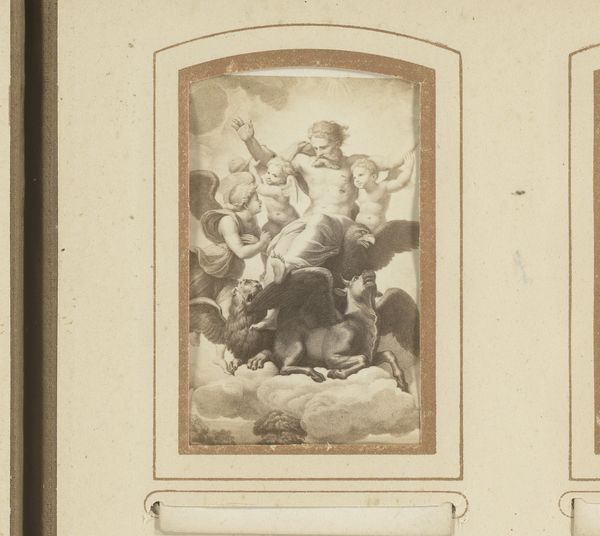
photography, sculpture
#
figuration
#
photography
#
ancient-mediterranean
#
sculpture
#
history-painting
#
realism
Dimensions: height 251 mm, width 199 mm
Copyright: Rijks Museum: Open Domain
Curator: Here we have Giorgio Sommer's photograph of the Farnese Bull, taken sometime before 1879. It captures a sculptural group now housed in the Rijksmuseum. My immediate impression is one of theatrical intensity. The stark contrasts amplify the drama. Editor: I agree. Notice the tightly packed figures straining against each other, their bodies intertwined in a vortex of form. Sommer masterfully uses light and shadow to define musculature and highlight the emotional crux of the composition. Curator: Precisely. The sculpture depicts the myth of Dirce, bound to a wild bull by the sons of Antiope. Consider how this narrative reflects the cultural obsession with power, vengeance, and the precariousness of human existence. These stories acted as a collective warning to Greek society and beyond. Editor: Let's also look at the spatial arrangement. The figures create a dynamic pyramid, lending a sense of monumentality and grandeur, though the subdued monochrome flattens the original work of art to graphic shapes and shades. Do you find it as chaotic in photographic form as I do? Curator: It certainly changes the reading of the original sculpture. Through photography, the figures seem further burdened and more static in history. Though the poses express intense struggle, they become frozen and monumental in time. We can feel that anxiety of history preserved through such artistic interventions. The very concept of antiquity, presented for audiences through reproducible form. Editor: Indeed. Sommer has isolated the statue from its broader context, offering the image to widespread circulation, like a fossil to be endlessly studied and copied, but robbed of much of its dynamism. Curator: Exactly, Sommer provides us with a fascinating meditation on both historical preservation, the dynamics of power, and the nature of how photographs and the reproducibility they allow can give us alternative emotional readings to original sculpture. Editor: Ultimately, grappling with form invites engagement beyond aesthetics, opening doors to diverse historical and cultural realms that continue resonating today.
Comments
No comments
Be the first to comment and join the conversation on the ultimate creative platform.

